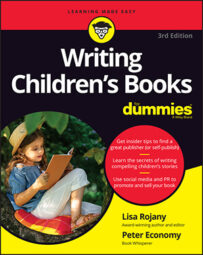What constitutes a good sentence or description of scenery, of place, of context in your children's book? One that evokes a strong image in the reader’s mind. Getting someone to read words and see what you want her to see requires careful writing. One way to help you create a vision for your readers is to engage their senses.
You engage their sight when they are reading your words, but to engage the mind’s eye, you need to help them use their imagination. The best contextualizations about a place describe
The way it tastes
The way it feels on the skin or to the touch
The way it sounds
The way it smells
The way it looks
Don’t spend too much time on the way a place looks. Readers may need to be able to see it in their minds' eye, to imagine how it looks, but it’s better to show them using words that develop a sensory experience focusing more on the other senses. That way, you won’t get too caught up in telling (a no-no) versus showing (a yes-yes).
Most of these make sense, but how can a place taste? The following example uses the reader’s sense of taste to evoke an image in her mind’s eye:
The house reminded her of a sour lemon on a hot day, both refreshing and surprising. Flanked by traditional white houses with blue trim, it was light yellow with screaming purple trim and an enormous orange front door.
This description uses the reader’s sense of sound to convey the terror the main character feels:
From somewhere deep within the school came screams of fright, groans of pain. Staring at the dark windows and boarded-up doors, Roxy could not move a muscle.
For real examples of how the senses can be engaged, check out C. S. Lewis’s The Lion, the Witch and the Wardrobe (Harper Trophy) for the tastes of Turkish delight, the bitter coldness of Narnia, and the sounds of footsteps and carriages approaching.
Also read Natalie Babbit’s Tuck Everlasting (Farrar, Straus and Giroux) for the bristly, itchy grass; the heat of the noontime sun; and the deep, damp mattress of leaves on the ground. Finally, read Frances Hodgson Burnett’s The Secret Garden (HarperCollins) for the wailing of cholera victims and the sweet taste of wine.
The best writing gets the reader’s senses fired up alongside the heart and mind. Whenever you experience an event, your senses record it right along with your heart and your mind. As a result, most people have years and years of stored experiences trapped inside them that can be accessed by reawakening those sense memories. Engaging your senses, your emotions, and your fertile imagination brings you closer to a child’s world.

